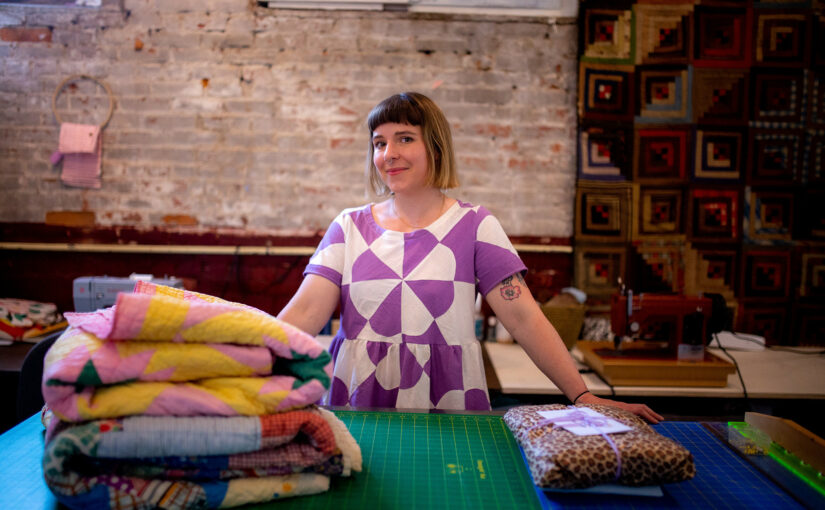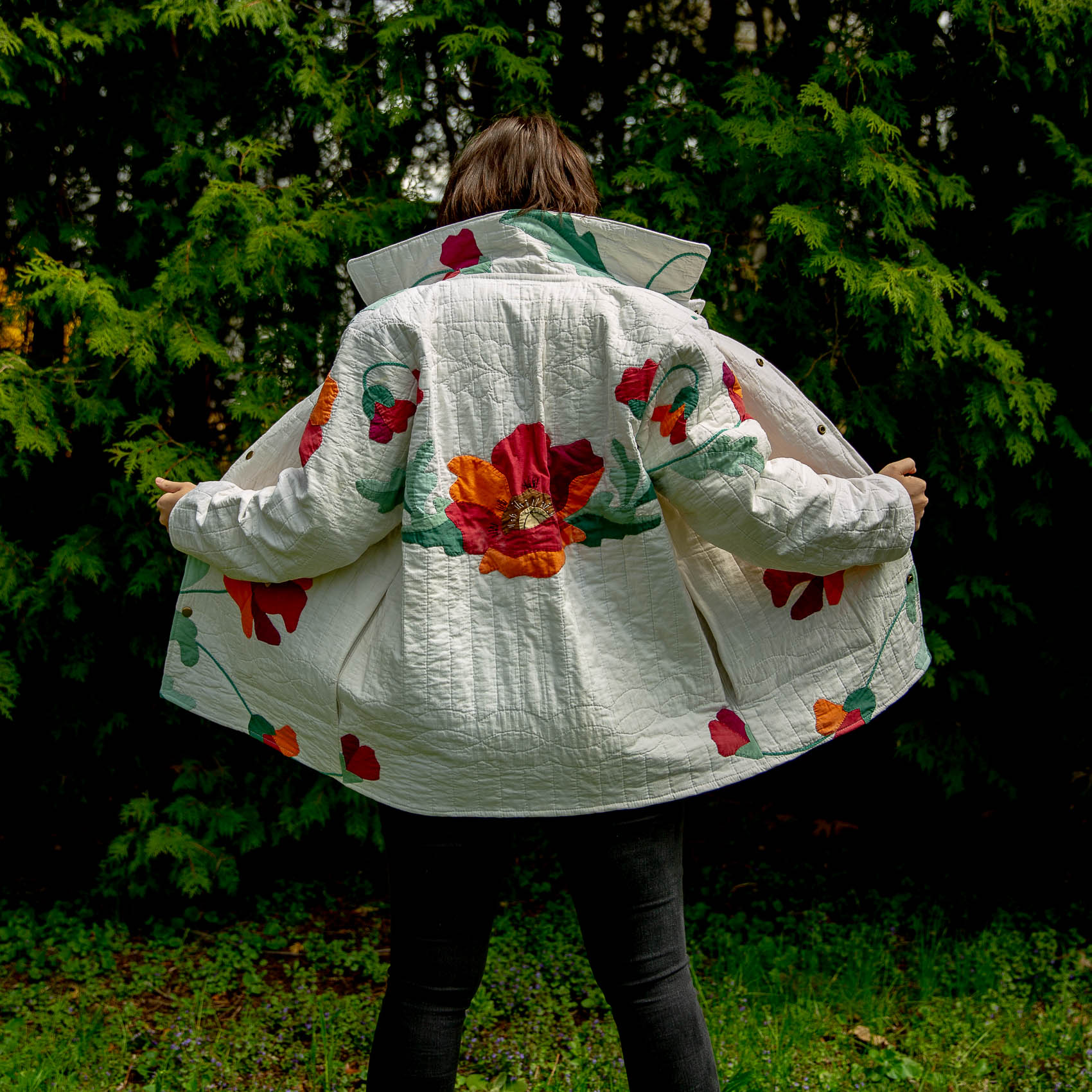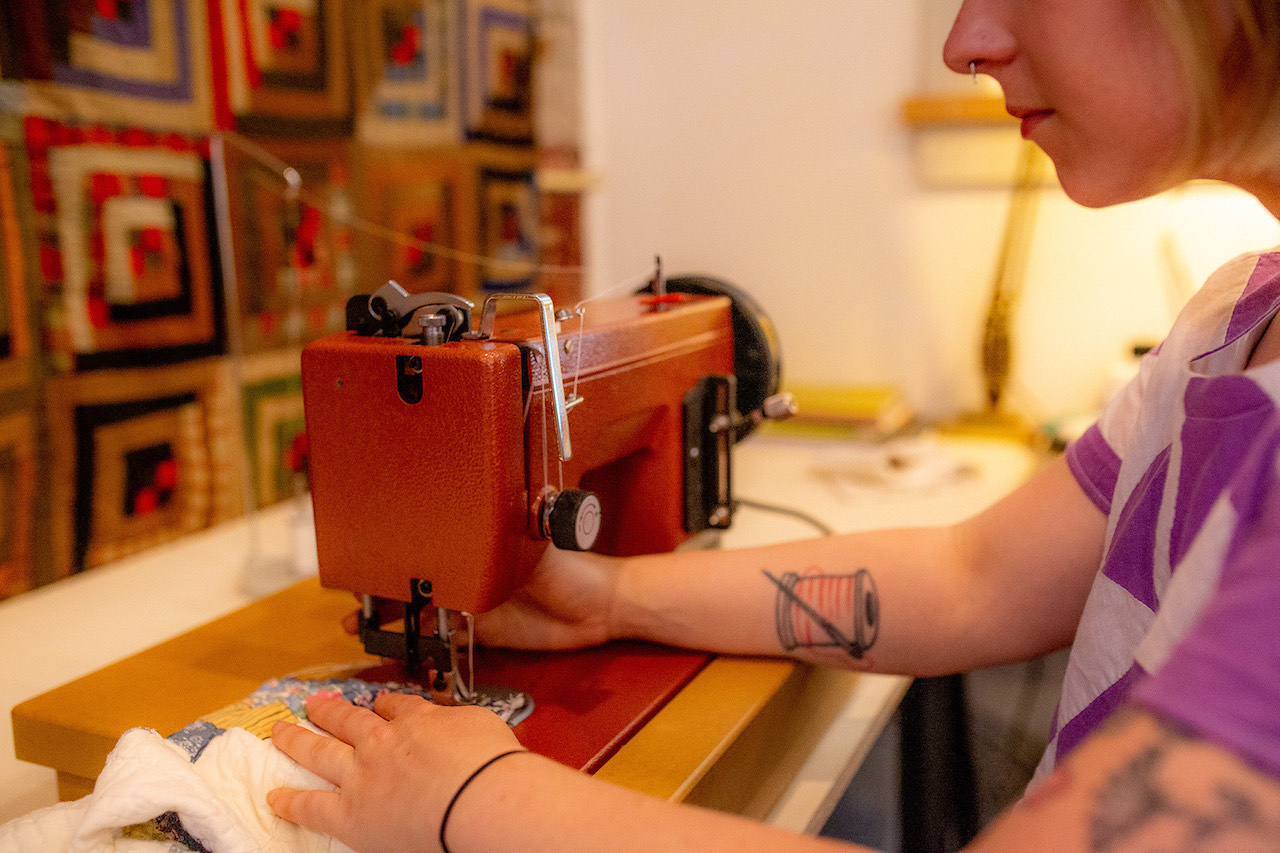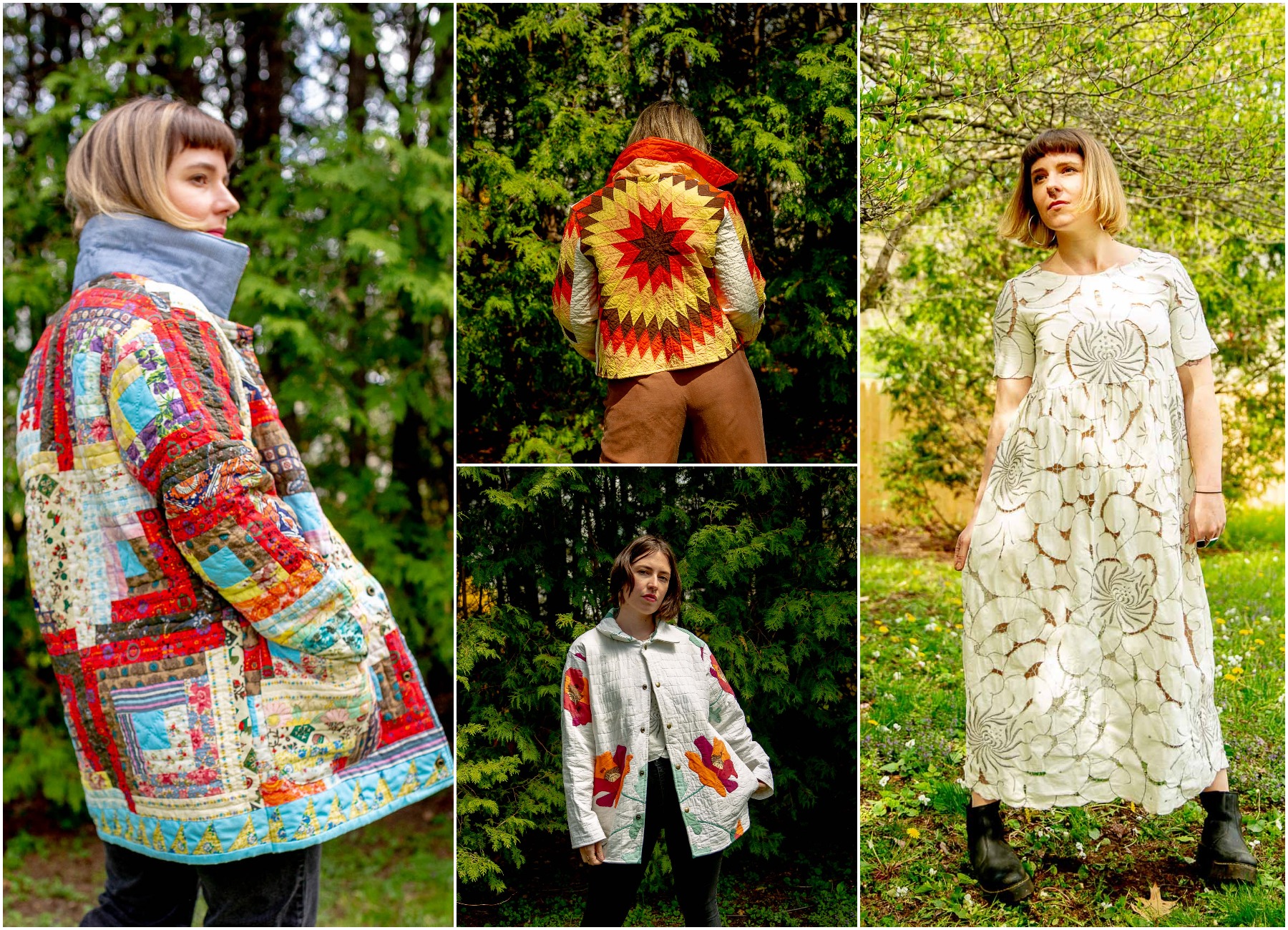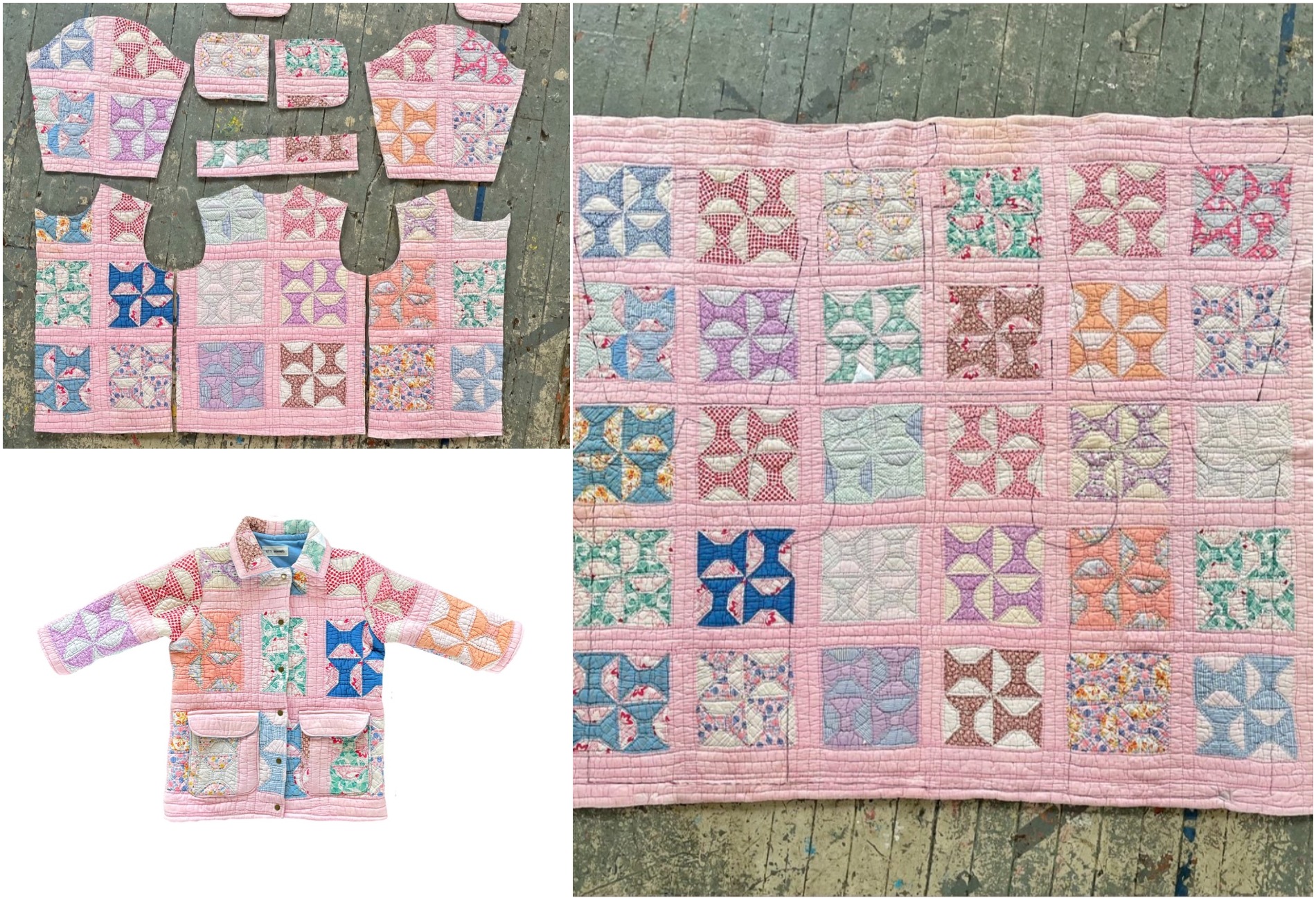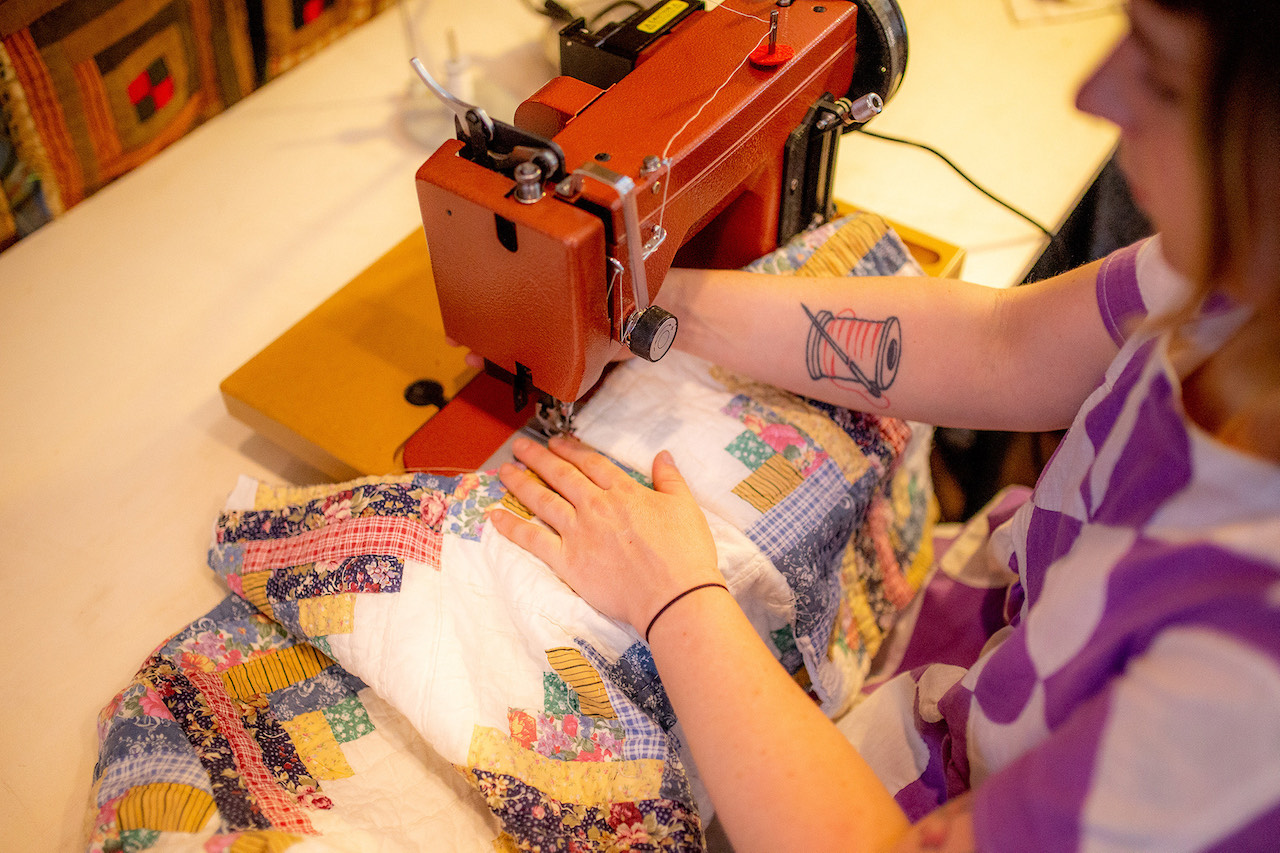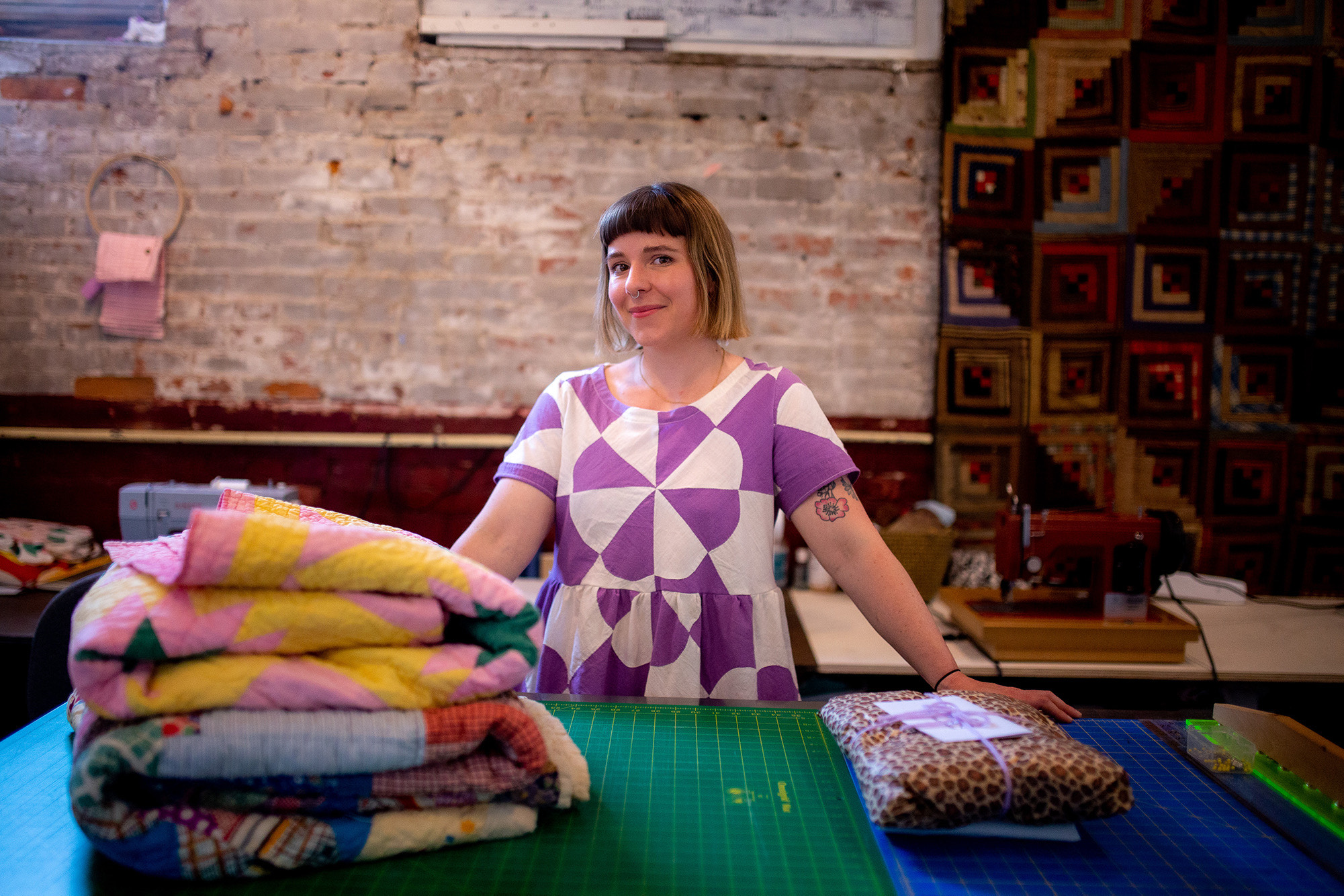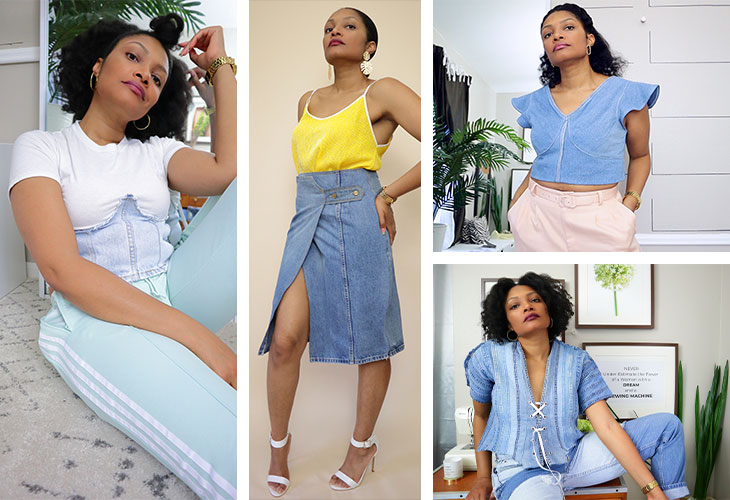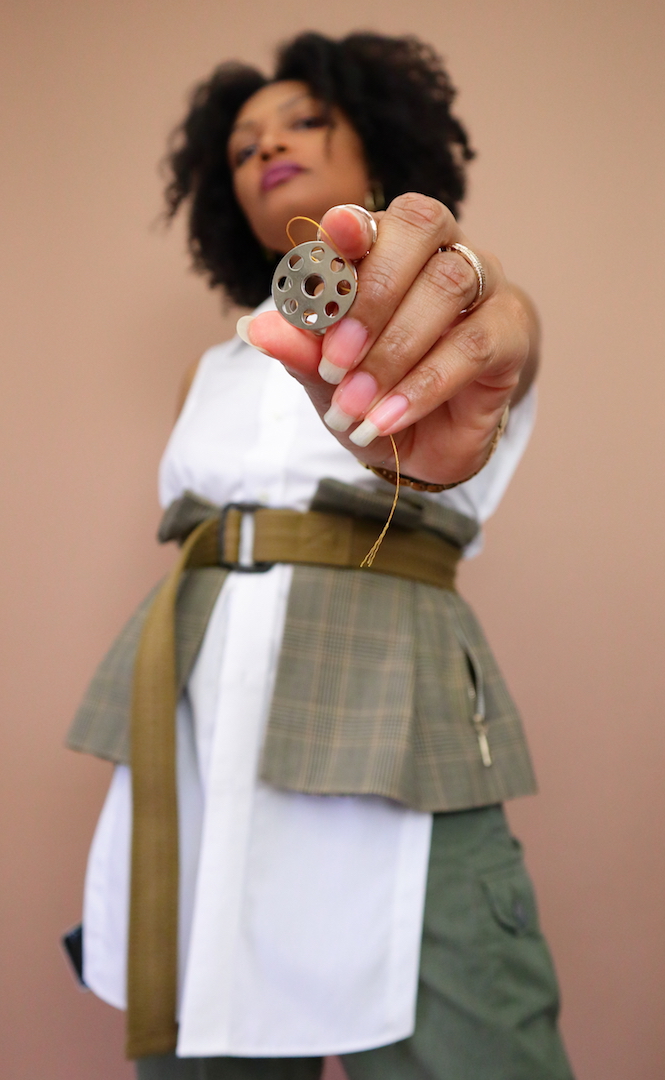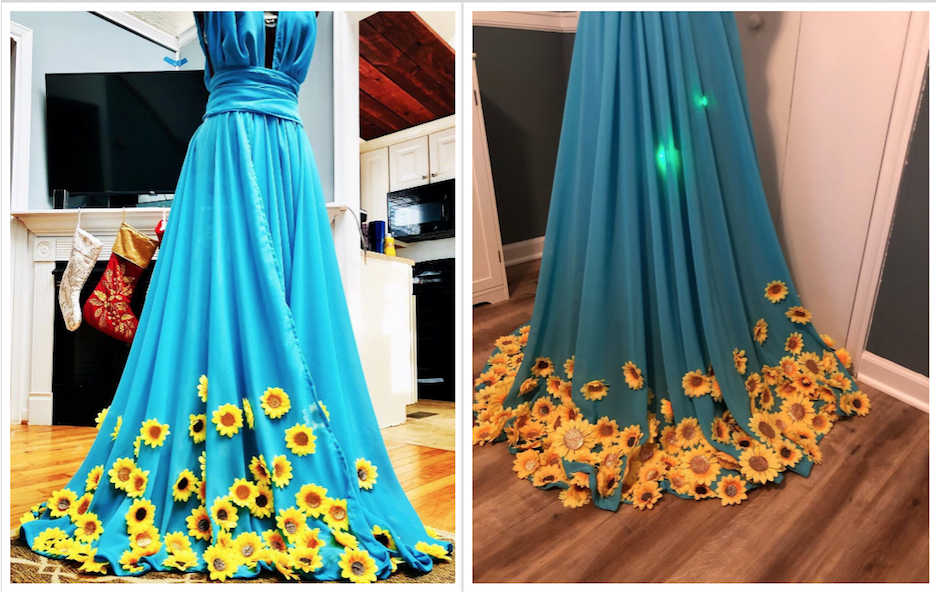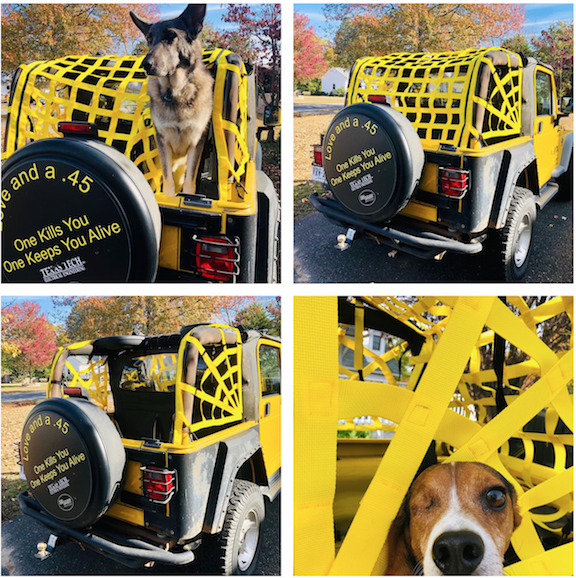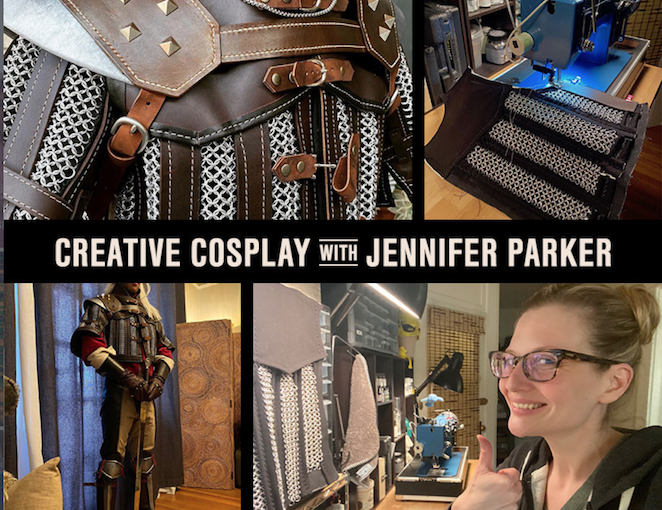In episodes of the classic sci-fi show Star Trek, landing parties exploring uncharted planets needed three pieces of equipment: a communicator to contact the crew still on the Enterprise starship, a phaser for defense and a multiuse device called a tricorder. Self-proclaimed Trekkie and Sailrite® customer Adrienne Killey would add one more crucial piece of equipment to that list — a Sailrite® Ultrafeed® LSZ Sewing Machine.
Adrienne purchased an Ultrafeed LSZ in early 2021. A little over a year later, she set a goal to make custom Star Trek cosplay outfits in time for a convention in early 2022 — but she had to overcome some challenges with her machine first. Luckily, her experience sewing began long before she purchased an Ultrafeed.
Adrienne started out sewing décor items and clothes on a home sewing machine that her mother gave her in 2002. Her mother’s other gift to her — the love of sewing — came during Adrienne’s childhood. She grew up seeing her mother sewing nearly every weekend. “In watching her, I learned how helpful knowing a skill like sewing could be,” Adrienne said. “Sewing gave her, and now me, an outlet for creativity.”
She has sewed a variety of projects, including clothing, a quilted wall hanging and crossbody water bottle caddies. Her home machine was fine for those projects — but when Adrienne set her sights on a more ambitious DIY, she realized she needed a more powerful machine to match.
Discovering the Ultrafeed LSZ
During the 2020 boating season, Adrienne and her family were able to spend some time on their Four Winns Vista 268 cruiser powerboat. That’s when Adrienne decided that the boat’s existing canvas enclosure needed an upgrade to fit her family’s preferences.
“A full set of canvas with Strataglass™ came with the boat. When anchored, we would hang towels from the bimini to provide shade, but that blocked the view. That was the inspiration to create new canvases on both the starboard and port sides that would provide shade, but also allow air to move through the boat.”
Knowing that her domestic sewing machine wouldn’t be able to handle marine-grade material, Adrienne and her husband began shopping for a heavy-duty machine. Their search was quick and easy. The couple had seen the Ultrafeed in several sailing videos they’d watched on YouTube — and when they did more research on the machine, they liked what they saw.
The machine’s sturdy construction and zigzag stitch capability were definite pluses. But Sailrite’s vast library of free educational content was the biggest draw for Adrienne.
“I also liked that Sailrite produces very detailed how-to videos to share sewing knowledge and advice,” Adrienne said about choosing a Sailrite machine. “The huge number of videos gave me the sense that Sailrite is not only a manufacturer of sewing machines, but they also care enough about their customers to try to give them all the information they need to have a positive project outcome.”
As it turned out, the videos became even more important as Adrienne began using her Ultrafeed.
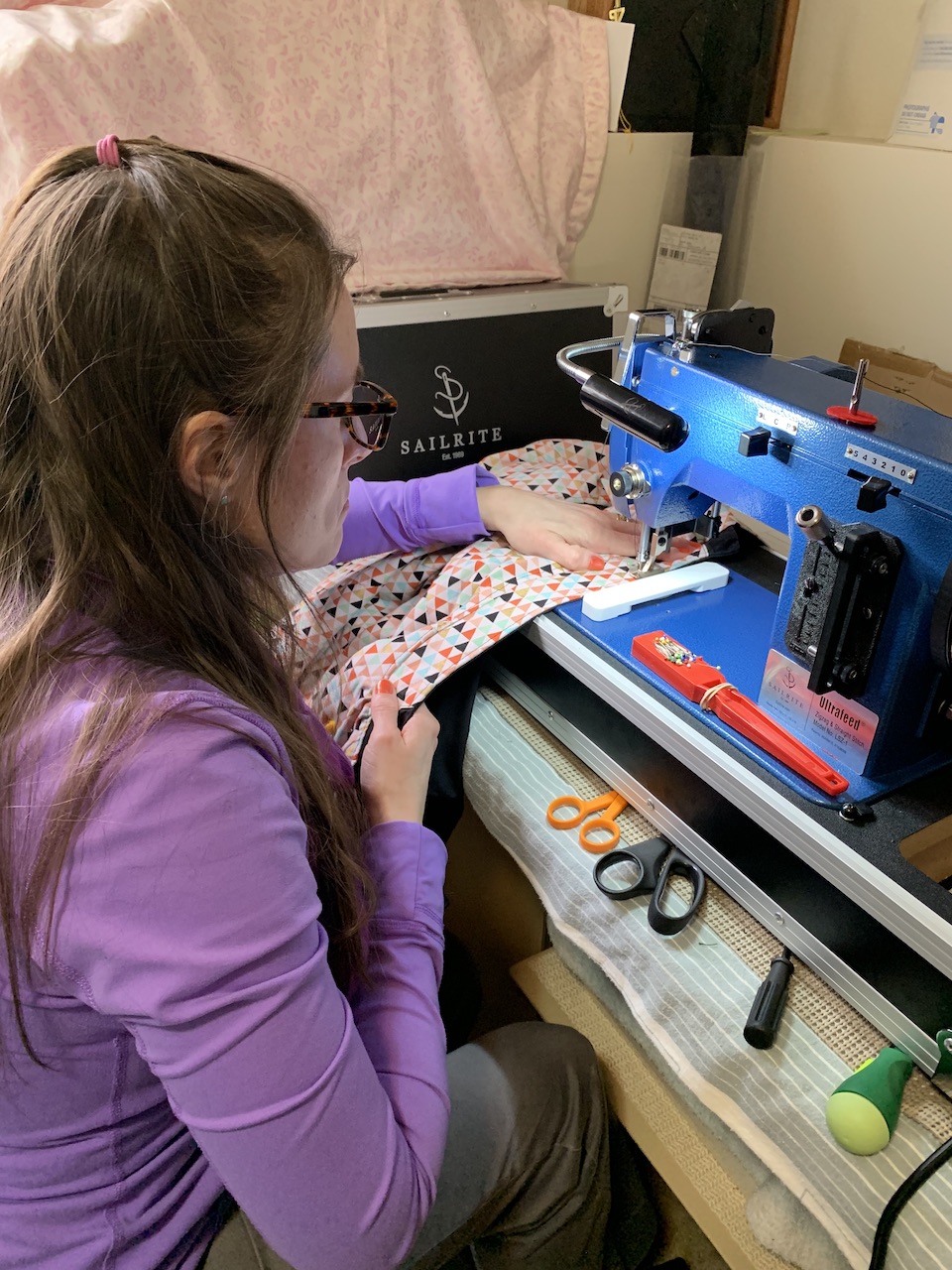
When the LSZ arrived, Adrienne tried a test project to see what the machine could do. Unfortunately, it didn’t turn out how she hoped …
“My first project on my Sailrite was a tank-style dress using cotton jersey fabric. I watched the ‘Home Sewing with a Sailrite Ultrafeed Sewing Machine’ video and read the Guidebook. When I sat down to my LSZ for the first time, I assumed I didn’t need to check or adjust the timing because the machine was brand-new directly from Sailrite, and they set the timing before sending it out the door.”
Adrienne was right that her Ultrafeed was perfectly timed. The problem was that the machine wasn’t timed for the light home fabric she picked out for her dress.
You see, Sailrite’s expert technicians tune and tension LSZ machines to sew thick marine-grade fabrics right out of the box. That’s because most people who buy an LSZ sew for their boats, and they need the machine to be ready for sailcloth, marine canvas and vinyl right away. The Ultrafeed can easily handle thinner home fabrics and thread after some adjustments — but Adrienne’s machine wasn’t adjusted yet, so she couldn’t finish the dress.
“The problems I had with that project were newbie user error and not an incompatibility of the stretchy fabric and the machine,” Adrienne said. “For the first couple of projects, I treated the machine as I would my [home sewing machine] and only adjusted the [upper thread] tension.”
It would take a few more tweaks to complete a home sewing project. But for the moment, Adrienne turned her attention to the reason she bought an Ultrafeed in the first place: the canvas enclosure for the family’s powerboat. Before getting started, Adrienne dove into the how-to videos on Sailrite’s YouTube channel.
“The videos on the Sailrite YouTube channel have been an indispensable resource for me,” she told us. “For example, when I made my canvases, I watched ‘How to Make an Enclosure Aft Curtain,’ ‘Double Sided Tape for Sewing – Seamstick Basting Tape for Canvas,’ and many others related to making canvases before I even bought the materials. I often referenced the videos throughout my project.”
The videos helped Adrienne get comfortable with the new machine, and she completed the enclosure in time for the 2021 boating season:
Although the Killey family is still new to boating, having purchased their Four Winns Vista in 2018, they find great joy in the hobby. “We enjoy the serenity on the water and the time to spend as a family,” Adrienne said. “When we’re on the boat, we’re exploring, swimming, relaxing, having fun and making memories. We find the time on the water to be rejuvenating.”
The family likes taking weekly dinner cruises and weekend excursions on Lake Michigan. This summer, they hope to cruise some different waterways in their home state of Wisconsin.
Voyages of the Ultrafeed LSZ
Adrienne’s success with the canvaswork gave her the confidence to try another complex DIY: cosplay costumes that she, her daughter and her dad could wear to a Star Trek convention. It would be her second attempt at a home sewing project on her Ultrafeed, and she was determined to make the most of it.
“After some initial home sewing disappointments, I learned I cannot be timid about making adjustments to my LSZ,” Adrienne said. “When I decided I wanted to create the Star Trek cosplay costumes, I deliberately used the project as a way to really get to know my LSZ and figure out how to adjust the machine correctly for home sewing. I just knew that it could handle it and my challenges in the past were user error, not the machine.”
To do that, Adrienne rewatched the Ultrafeed home sewing video, as well as a video on machine timing. She also checked the Guidebook again. Armed with this research, she tried several adjustments on her machine.
In addition to installing a #10 home sewing needle, “I also adjusted the upper tension, bobbin tension and pressure-regulating thumbscrew appropriately for light fabric and thread,” Adrienne told us. She then went above and beyond what’s required for sewing home fabric by tweaking the shuttle gib hook’s rotation and position — in other words, adjusting the machine’s timing.
The adjustments were a complete success! Adrienne and her family had a great time showing off their finished cosplay uniforms at the Star Trek: Mission Chicago convention in April 2022.
“The uniforms came out great,” Adrienne said. We couldn’t agree more:

Adrienne’s daughter, Kayla, wore a replica of Ensign Mariner’s uniform from the new animated show, Star Trek: Lower Decks. Her dad, George, dressed in a Captain’s uniform from Star Trek: The Wrath of Khan. And Adrienne herself went in a stylized version of the uniforms worn by members of a covert organization called Section 31, which has appeared in multiple Star Trek shows and novels.
The Mission Continues
Now that Adrienne has boldly sewn where few have sewn before, what’s next for her? We’re happy to share that she has plans to remake a beloved backpack purse using marine vinyl from Sailrite.
Adrienne also told us that she hasn’t forgotten about the tank dress project, and she plans to take another stab at it soon. Since she first tried that project, she’s learned so much about adjusting her machine for home sewing.
“Learning how to properly master the LSZ is a journey. Making adjustments to the entire machine is necessary at the beginning of a project — and maybe even during the project.
“My journey has taught me to always have a screwdriver nearby; to not skip making timing adjustments; to be patient when dialing in the right tension and timing; and to have scrap fabric handy during the adjustment process. Taking the time in the beginning to properly adjust the LSZ for every aspect of the project will save you from seam ripping later.”
We wrapped up our interview by asking Adrienne if she had any words of wisdom for other new or prospective LSZ owners. Here’s what she said:
“I love my LSZ, and I look forward to completing more projects on it. For those considering purchasing an LSZ, it is a very versatile machine and well worth the cost. For new owners, read through the manual and watch all the videos in the ‘Sailrite Ultrafeed Set-Up, Use & Maintenance’ playlist on the Sailrite YouTube channel. Also, before starting a project, search for and watch any videos on the Sailrite YouTube channel that are similar or related to the project you’re starting.”
Thank you for your kind words and thoughtful advice, Adrienne! We wish you success in all your future projects on your Ultrafeed, and we can’t wait to see what you make next. Sew on and prosper!
Who We Are
Sailrite is your one-stop DIY shop! We are a passionate crew of do-it-yourselfers who strive to equip you with the supplies and how-to knowledge you need to tackle your next project. Do you want to learn upholstery, leatherwork, canvaswork, hobby sewing, bag making or more? We have the fabric, tools, hardware, sewing machines and notions you need to master any DIY. And even if you’ve never sewn before, our tutorials and how-to videos are designed for beginners and experienced crafters alike.
Start your DIY journey today: www.sailrite.com


